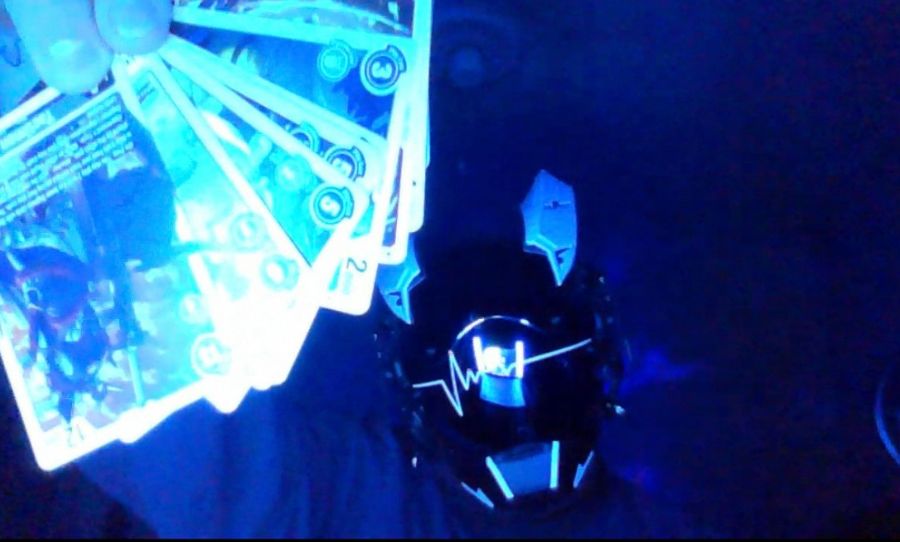From Seapunk to Hyperpop, we take a look at 4 completely new genres of music that have arisen since the turn of the 21st century.
In psychology, the end-of-history illusion is a phenomenon in which individuals believe they’ve already experienced all of the significant growth and development in their lives. It’s an illusion that I’ve certainly fallen for: the long-haired, bearded music writer that I am now is almost unrecognisable from the poorly-dressed, shy Computer Science student I was in my uni days; yet had you asked that nineteen-year-old kid if he’d change all that much by the time he reached my age he would’ve flatly told you “no”.
For many of us, it’s easy to fall into the trappings of a similar illusion with music: Pop, rock, jazz, blues… they’ve all been around for decades! Surely all the genres have already been invented, right? WRONG. New genres and subgenres continue to spring from the soils of the music world just as frequently and vibrantly today as they did in the 20th century. Today, I’d like to share four of the most interesting and significant new genres with you.

First, a disclaimer: could some of the following musical movements I list technically be classed as subgenres rather than entirely new genres? Perhaps. Do I care about that sort of nomenclature strongly enough to argue about it? No. So without further ado, let’s begin.
Seapunk
In the late 2000s and early 2010s a subculture known as “Seapunk” arose on Tumblr, the subculture was largely defined by its aesthetics: ‘90s style 3D animated sea creatures, bright cyans and pinks, palm trees, et cetera.
Seapunk began to gain popularity in 2011 when it was first mentioned in a tweet by musician and internet personality Lil Internet. It then spread quickly on other social media platforms such as Twitter, with many users creating and sharing seapunk-inspired art, fashion, and, (most importantly for today) music. The music of seapunk combined hip hop and R&B with EDM, then drenched the whole thing in reverb-soaked edits of ‘90s pop and dance samples.
By late 2012 the movement had gained enough traction that artists like Rihanna, Lady Gaga, Azealia Banks and Katy Perry were beginning to adopt and commodify its aesthetics. This killed Seapunk almost overnight, since the last thing niche internet users who thought they were too cool for school wanted was to be copied by Katy Perry.
Vaporwave
From the ashes of seapunk rose vaporwave; a less marketable evolution of the now “mainstream” genre that became distinct enough to be classed as a genre of its own. Aesthetically, Vaporwave adopts similar ‘90s visuals to seapunk but leans in harder, swapping ocean imagery for ’90s software logos and graphic design elements.
Sonically, Vaporwave music is a much lower tempo, and its vocal samples (mostly lifted from ’80s and ‘90s pop and R&B) are chopped and manipulated far more. It’s overall a less danceable, fun, and pop-y sound than Seapunk; a decision intentionally made to avoid Vaporwave suffering the same “mainstream” fate as its progenitor.
Vaporwave also incorporates metatextual criticism and satire of modern consumerism, using the imagery and sounds of ‘90s software and mall culture and distorting it into something dystopian. The name “Vaporwave” itself is derived from “Vaporware”, a term applied to fraudulent software (mainly from the ‘90s and 2000s) that never delivered on the promises its marketing made.
Vaporwave’s most famous artists include the likes of Saint Pepsi, Blank Banshee and Vektroid, though arguably the movement’s most essential pioneer is Macintosh Plus with his record Floral Shoppe; a record that became to vaporwave what In the Court of the Crimson King was to prog rock, or Nirvana’s Nevermind was to grunge.
Dubstep
Dubstep is a genre that just about everyone is familiar with, at least at a surface level, thanks to acts like Skrillex, Knife Party, and Nero; I therefore won’t retread familiar ground here.
What most casual listeners don’t know, however, is that “brostep”: the bombastic, bass-heavy cacophony that turned dubstep into the butt of so many internet jokes is just one subgenre of the movement, one that split off from the genre’s more subtle UK roots.
Birthed out of the UK’s garage scene in the 2000s and pioneered by acts like Skream, Mala, Coki and Burial (Yes, Burial’s iconic record Untrue is argued by many to technically be a dubstep album); the original dubstep lacked the absurd bass drops that the genre would later become known for, focusing more on creating entrancing soundscapes of brooding quasi-808 bass and sinister sounding reverb-drenched melodies.
Youtube video essayist Timbah.On.Toast has done an exceptional job at exploring the history of dubstep in far more depth than this article format allows; so if you’re interested in learning more about the vibrant and interesting world of true dubstep, I urge you to check out his video essay below.
https://www.youtube.com/watch?v=-hLlVVKRwk0
Hyperpop
Hyperpop is to pop music what punk music is to rock and roll; it takes the conventions of the genre and stretches them to their abrasive extremes. In the case of hyperpop, that generally means basslines so loud that they become clipped and distorted, Antares autotune set to its most robotic settings, and tempos increased to hyperactive levels.
The genre emerged in the 2010s and was popularized by artists such as SOPHIE with her record OIL OF EVERY PEARL’S UN-INSIDES and Charli XCX with her Vroom Vroom EP (which was also co-produced by SOPHIE); It’s the eccentric duo of 100 Gecs that form the modern archetypal view of hyperpop, however, with their bombastic debut album 1000 Gecs.
Hyperpop has become increasingly popular in recent years, with many mainstream pop artists starting to incorporate elements of the genre into their more traditional music. This has led to a greater mainstream acceptance and recognition of the genre, and its influence can be heard in the music of many popular artists today.



